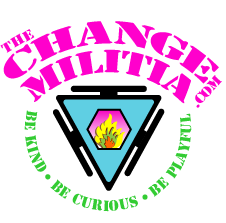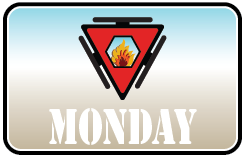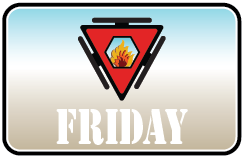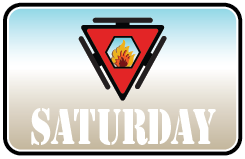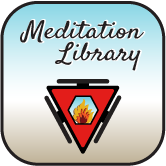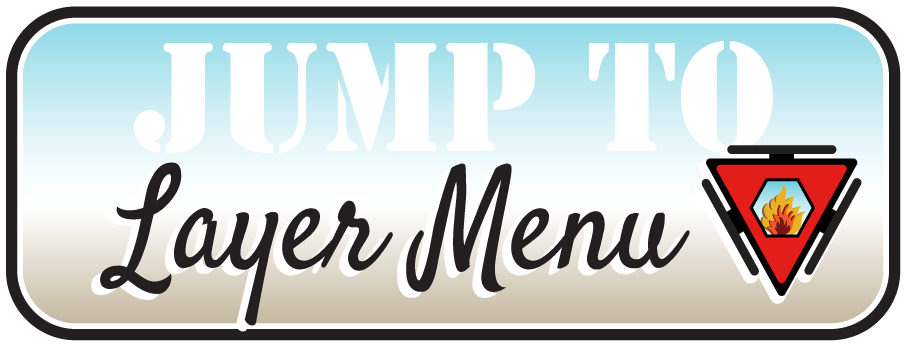Layer Three, Week One – Sunday
- Morning – Watch Videos and Read Instructions Energy and Movement – Introduction and Adductor Pulse
- Midday – Watch Video and Read Instructions Zero, Non-Zero
- Evening – Read Layer Three Concepts
- Evening – Practice Adductor Pulse
Sunday’s Focus
Take stock of your internal authority. How large and in charge do you feel? To whom or what do you regularly defer? As you make your way through the next few days, question authority. When you do something, ask yourself if you are deciding or is it being decided for you? Are your decisions just habits? Do you do what is expected of you? To whom or what do you subjugate yourself? How comfortable do you feel deciding? How uncomfortable does subjugation feel? Is going along easier?
Sunday’s Concepts
The last of last week’s concepts dealt with examining your beliefs. How did you do? How many have you examined? If not, why not?
You anchor your habits to your beliefs. Beliefs become a constant confirmation of the images you hold about what is possible and impossible. Look to the heart of every always and never, your absolutes, and you will find a belief that limits you.
All beliefs are limiting. They have to be. Beliefs give a framework, a box, that delineates what is inside and what is outside. Either things fit into your belief or they don’t. Everything that doesn’t is given a limited or negative value. Options and opportunities outside of your beliefs become either improbable or inconceivable. They are discounted. And similarly, things that fall within your beliefs are given priority without current merit (based on past experience or your predisposition).
Beliefs make you lean in habitual directions. They keep you from being balanced, limit your productivity and efficiency.
You decide what you believe, right?! Do you accept that it is your right to self-determine your beliefs? Have you allowed yourself that authority? Does it feel like a right or an obligation? Does it feel like work or freedom?
Accepting and allowing that you have the right to determine what and how you believe is the first step toward self-responsibility and self-determination.
Layer Three, Week One – Monday
- Morning – Practice Adductor Pulse
- Evening – Read Layer Three Monday Concepts
- Evening – Practice Zero, Non-Zero
Monday’s Focus
Personal responsibility is you taking control, becoming your own authority. Spend the day examining who you allow to be responsible for your decisions, happiness, distractions, trajectory, schedule, and fulfillment. Who decides how kind you are or how often you are kind. Who determines your moods? Are you in charge of your anger or do you allow others to control it?
Monday’s Concepts
Personal responsibility is your ability to decide and capability to respond. Does personal responsibility feel like work or freedom of choice? When you take personal responsibility you empower yourself, stop blaming others, and unlimit your opportunities. Personal responsibility keeps you from making demands and having expectations of others.
The primary entryway into personal responsibility is self-evaluation. The first two layers of the program gave you some flavors of that. This layer will build on that foundation.
Your sub-conscious mind constantly self-evaluates but rarely makes that information conscious. It makes a determination of possible threats and then whispers the associated fears into your head. What you will be playing with in this layer and the next is learning how to make those evaluations a conscious habit.
Layer Three, Week One – Tuesday
- Morning – Practice Adductor Pulse
- Evening – Read Layer Three Tuesday Concepts
- Evening – Practice Zero, Non-Zero
Tuesday’s Focus
It’s decision time. Are you tired of reacting, tired of drama, stress and overwhelm? Are you tired of being blindsided? Are you ready to make a commitment to your own sovereignty? Is freedom and independence beckoning? Can you feel the pull? Can you feel where your determination lives in your body. Feel for it, let it bloom, let it flower.
Tuesday’s Concepts
Making your evaluations conscious starts with a decision. You have to want to. If you aren’t committed, your subconscious mind will continue to make the evaluations. Subconscious evaluations almost always lead to habitual reactions. Habitual reactions are rarely the most productive, efficient, or beneficial. And habitual reactions almost never bring about beneficial change.
Evaluating your world and your life can be scary. It can feel daunting. To take this on requires a clear intention, a defined trajectory, and the will and determination to challenge yourself. To succeed, celebrate every success, rejuvenate joyfully, and move dynamically.
Layer Three, Week One – Wednesday
- Morning – Practice Adductor Pulse
- Evening – Read Layer Three Wednesday Concepts
- Evening – Practice Zero, Non-Zero
Wednesday’s Focus
When you feel the glow of self-determination in your belly it becomes your center. Feel for it, feel for its power, feel its strength. Let your presence grow to meet your determination. Begin by feeling for how often and to what degree you are present. Start with conversations. What percentage of the time are you listening without constructing and framing an answer?
Wednesday’s Concepts
The degree to which you are able to consciously evaluate the input from your body, mind, emotions, and environment is the degree to which you are present in the moment. If you are distracted, your subconscious mind will make the decisions.
Distractions will fall into three major categories, internal, external, and relational. Internal distractions will include your thoughts, feelings, and sensations, (gross and subtle). External distractions will include everything outside of your skin: people, circumstances, the environment, and things like social media (things that exist but don’t intrude on their own). Relational distractions are ones that transit from internal to external or external to internal.
Layer Three, Week One – Thursday
- Morning – Practice Adductor Pulse
- Evening – Read Layer Three Thursday Concepts
- Evening – Practice Zero, Non-Zero
Thursday’s Focus
Continue to evaluate your presence by tracking your internal distractions (read Thursday’s Concepts). Look for your patterns. Look for frequency and value. Which internal distractions happen the most often and which are the hardest to ignore? Why are they hard to ignore? What value are you giving them?
Thursday’s Concepts
Internal distractions will primarily be mental. You have tens of thousands of thoughts a day, all vying for your attention. One thought creates a cascade of other thoughts. Thoughts are one of the things that generate emotions.
Every emotion is a distraction. When you have an emotion (label a group of sensations), you prioritize those sensations over every other sensation. Emotions have a preset value range. That preset value range is the level of distraction. When you label yourself as sad, you allow all of the thoughts and feelings that go with it to take center stage. Sad is a distraction. I’m not judging sad, saying you should be sad or not be sad, but just helping you to some of the collateral energy consequences. When you know your emotions are distractions, you can ask yourself if you are emotional because you want to be distracted.
Internal physical distractions include aches, pains, bodily processes, and all physical labels like tight, numb, tingling, sore, etc. You become aware of the physical sensation and allow yourself to think about it. The more you think about your physical sensations; the less present your are to your motivations and intentions.
Friday’s Focus
Track your external and relational distractions. What lures you away from your intentions, trajectories, or actions? Find your habitual and familiar interactions that take you out of your groove and then begin to choose, decide, not to be distracted. Lower the value you are giving to your distractions.
Friday’s Concepts
External distractions are the things you choose to give your attention to outside of yourself. Squirrels are a good example, as are bright and shiny objects, clouds, dust motes, reflected light, etc. Certain colors, shapes, car models, bikini models, anything that reduces your presence by pulling your attention away from what your are doing. The key here is that these are non-invasive, you choose to be distracted. How much of the squirrel video that I linked above did you watch?
You decide what you believe, right?! Do you accept that it is your right to self-determine your beliefs? Have you allowed yourself that authority? Does it feel like a right or an obligation? Does it feel like work or freedom?
Accepting and allowing that you have the right to determine what and how you believe is the first step toward self-responsibility and self-determination.
Saturday’s Focus
What causes you to react? Every reaction begins with a distraction. The value you give your distractions is directly related to the degree of your reaction. When you can lower the value of your distractions, you lower the degree of your reactions. If you are less distracted and less reactive, you stay more present, you stay on task, are more focused, productive, and efficient. When you are meeting your intentions, you progress, change happens, and happiness, fulfillment, and playfulness ensue.
Saturday’s Concepts
Relational distractions include when someone grabs your arm, calls your name, creates a scene, or something diverts your attention by projecting energy into your space. Getting into a hot car is an example. You get in and the trapped heat saturates you. Sounds and smells intrude upon your focus. Heavy emotional energies like rage and grief penetrate and are extremely difficult to not be affected by. All conversations and personal interactions are relational distractions. Every touch, breath, and movement brings you into some sort of communion with your environment.
Distractions are not necessarily bad. Hopefully, what you have found with the Daily Focus exercises is what is critical is the value you give your distractions. To what degree are you being distracted, at what critical time are you allowing the distraction, and how is your distraction limiting your effectiveness, happiness, and fulfillment?
Movement and Energy – Introduction
Movement and Energy – Adductor Pulse
Step 1 – Sit comfortably with the soles of your feet touching and your knees splayed. Elevate your body if it helps you get comfortable. Try to keep your torso vertical.
Step 2 – Keep your back fairly straight and gently bounce your knees.
Step 3 – The targeted tissue, your focus, is the inner thigh.
Step 4 – Relax non-targeted tissues.
Step 5 – Bounce for a couple of minutes until it feels very natural. If it doesn’t feel natural, stay at this step until it does.
Step 6 – Begin to contract your adductors and lift your knees a few inches and then quickly relax.
Step 7 – Lift and relax your knees as consciously, completely and quickly as possible. Continue for a couple of minutes.
Step 8 – Watch for your compensations.
Step 9 – When that becomes familiar, add the Square Breath to the movement. This will dramatically increase the complexity and it might take you a few tries to get the combination down.
Why it Matters – This movement will give you an experience of the difference between an unconscious movement and a focused, intentional, targeted, movement. As you learn to focus on targeted movements, you are learning to focus in a narrower band width. If all of your attention is concentrated on a smaller area, you will have greater insights and a fuller, more subtle experience.
Everyday Usability – Targeted movement is part of something we will call Pre-Sequencing. Before you start anything, you will learn to determine your intention, trajectory, focus, and desired understanding. This movement will also give you a direct experience of staying focused in the moment. As you learn to target, focus, and pre-sequence, it will be easier to identify your compensations and distractions in other areas.
Progression –Use this idea when you find yourself distracted, compensating, mentally fragmented or emotionally multi-basking (bringing several emotional configurations into any single situation). Do a pre-sequence before you start a project, task, or conversation. Know what you are targeting, have an intention, be focused, and feel your way through to a full experience.
Zero, Non-Zero Stretch
Step 1 – Sit comfortably with the soles of your feet touching and your knees splayed. Elevate your body if it helps you get comfortable.
Step 2 – Keep your back fairly straight and come forward just until you feel a stretch and then return to a place where you don’t feel a stretch.
Step 3 – So, the movement is to sit, relax in an unstretched place and then lean forward just until you feel the beginnings of a stretch … and then return to a place where you don’t feel a stretch. This is primarily a practice of subtle awareness, the stretch is an ancillary benefit. Bring the majority of your attention to the transition between no stretch and barely a stretch, and then pulse between the two.
Step 4 – As chronically tense/contracted tissues are recruited they will entrain with the healthy tissues and relax. As they relax, the point where you feel a stretch will change. You range of zero stretch will increase.
Why it Matters – Increased awareness is the degree you can be aware of the subtle. This movement is also an opportunity to be gentle with yourself, to listen deeply to your tissues, to find empathy and connection to the parts of you that are in fear and reactive. This understanding will make you stronger as you increase the percentage of your tissues you have working for you and reduce the number of tissues that are resisting your movements.
Everyday Usability – Getting to know your zero points will be a key component in staying balanced, growing your range, and increasing your capabilities. When you are certain that you are not being stretched (physically, mentally, emotionally, or energetically), you can cue rejuvenation. Your zero points are really your conscious ranges of acceptability. When you know you are out of that range, you can make decisions that will bring you back into balance.
Progression – After you feel the release that happens in your low back and inner thighs, start to find other ways, places, and circumstances to explore your inner edges. Find some typical movements you do, habitual interactions, or familiar reactions and see if you can gently and graciously play with moving into and out of a stretch.
